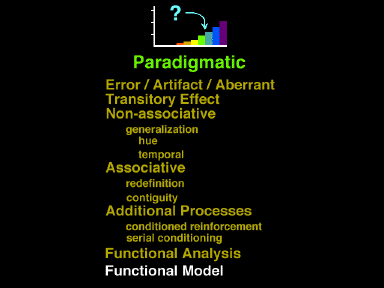 Slide 2-58
Slide 2-58

 Slide 2-58
Slide 2-58
Our next task is to create a functional model. The following few slides present an explanatory model which could account for the behavior obtained under an interfood clock.
 Slide 2-59
Slide 2-59
The presentation of a reinforcer at regularly-spaced intervals produces a set of stimulus elements which are correlated with the maximum probability or maximum imminence (Smax) of food presentation. It also produces a set of stimuli which are correlated with the minimum probability or minimum imminence (Smin). Relative behavior output is a function of the relative position within the temporal gradient between Smin and Smax. This view argues that behaviors opposite in vector occur at the two extremes of the gradient. This bipolar view provides a relatively general model with which to integrate several more specialized models.
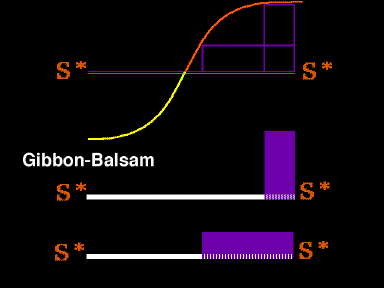 Slide 2-60
Slide 2-60
Gibbon has argued that the ratio of the duration of a trial stimulus to the overall interfood interval determines acquisition speed (bottom portion of slide). The upper portion of the slide illustrates how his model follows from a bipolar one.
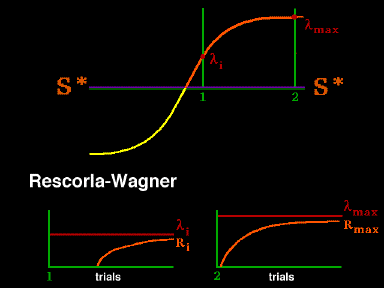 Slide 2-61
Slide 2-61
The Rescorla Wagner model specifies the growth function of behavior across trials with increasing experience. In particular, their model specifies the expected performance immediately preceding food presentation. "Learning" in that portion of the IRI is illustrated in the lower right portion of the slide. The upper portion of the slide illustrates how the Rescorla Wagner view is a single slice in the bipolar model. A second slice from an earlier portion of the IRI is illustrated in the lower left (slice #2 ).
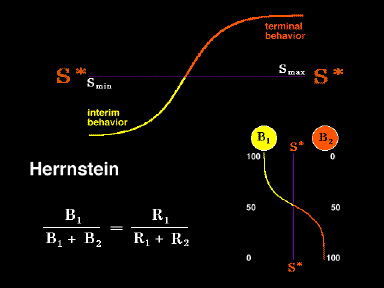 Slide 2-62
Slide 2-62
Herrnstein proposed that the proportion of behavior to an alternative was a function of the proportion of reinforcers available for that alternative. That perspective is illustrated in the bottom portion of the slide.
If a fixed interval is thought to generate two types of behavior, one immediately before food presentation that could be labeled approach, and the other at the beginning of the interval labeled avoidance; then a fixed interval could be thought of as a continuously changing concurrent schedule. The obtained function represents the behavioral equilibrium between the two schedules.
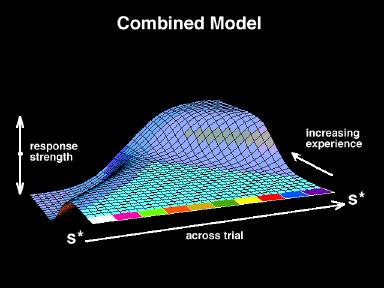 Slide 2-63
Slide 2-63
This surface portrays the change in behavior as a function of both time in the fixed-interreinforcement interval and with increasing experience. On first exposure (front), the interreinforcement interval has no effect. With growing experience, the final and initial portion of the IRI has an increasing effect. Approach behavior begins to occur at the very final portion of the IRI. Avoidance first begins in the initial portion of the interval. Eventually after asymptotic experience there is a relatively smooth transition from avoidance in the beginning of the interval to approach in the final portion of the interval; the ogive effect is apparent
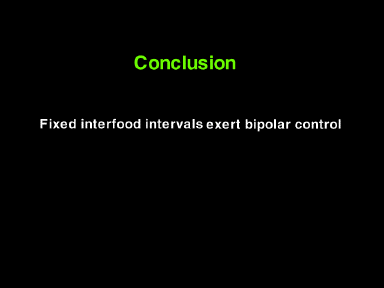 Slide 2-64
Slide 2-64
In conclusion, fixed intervals exert bipolar control.
More detailed information on this model is available at:
Determinants of Associative Behavior Change
Date Last Reviewed : May 26, 2003